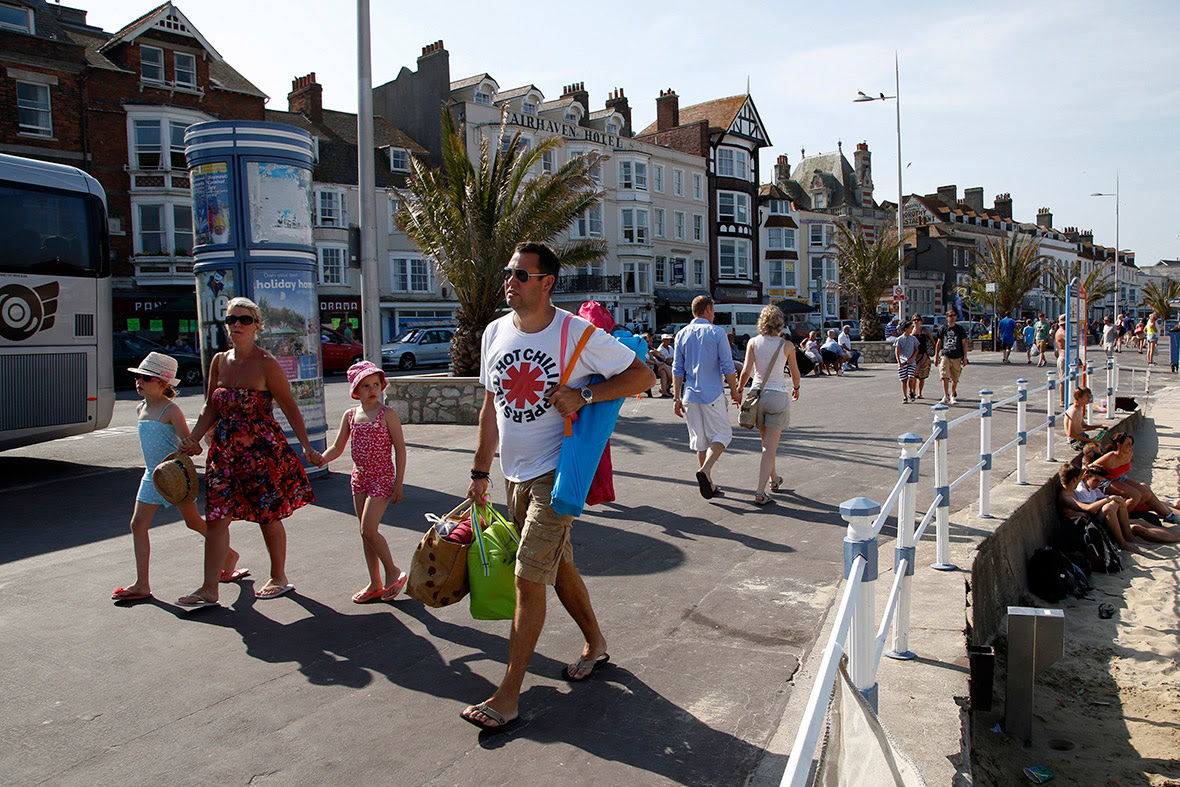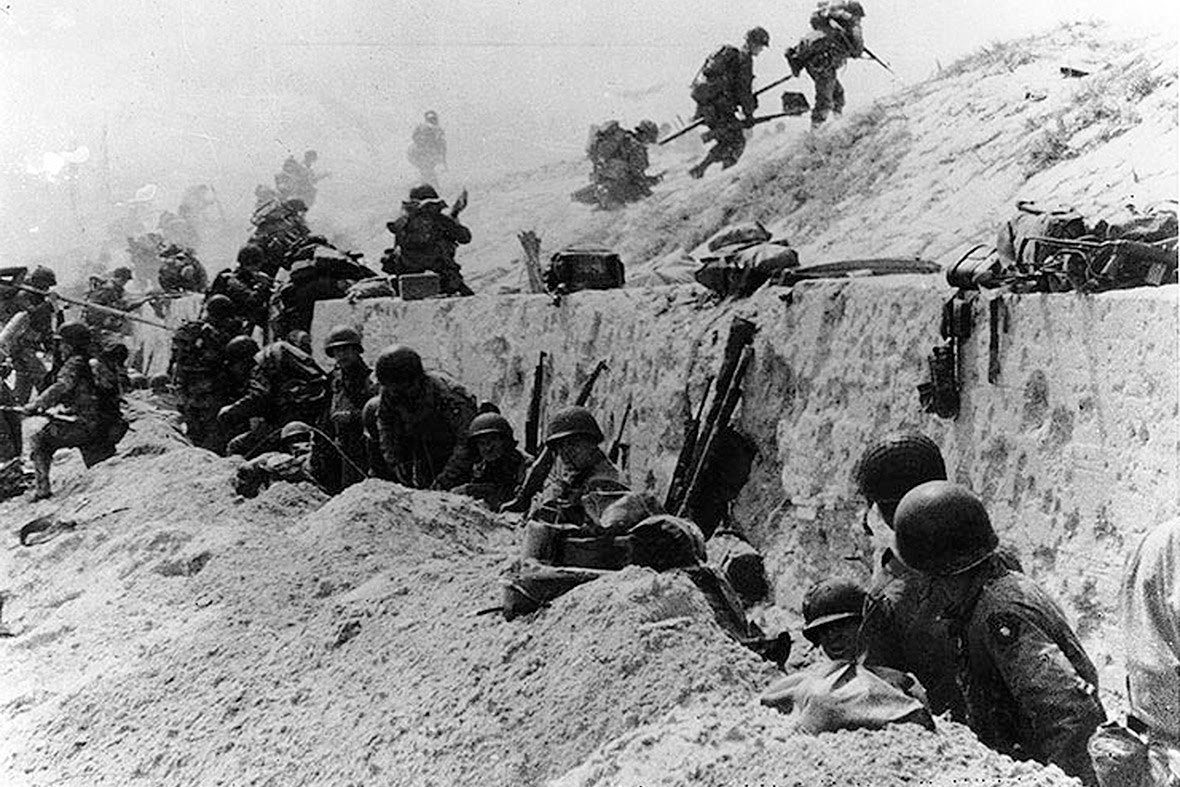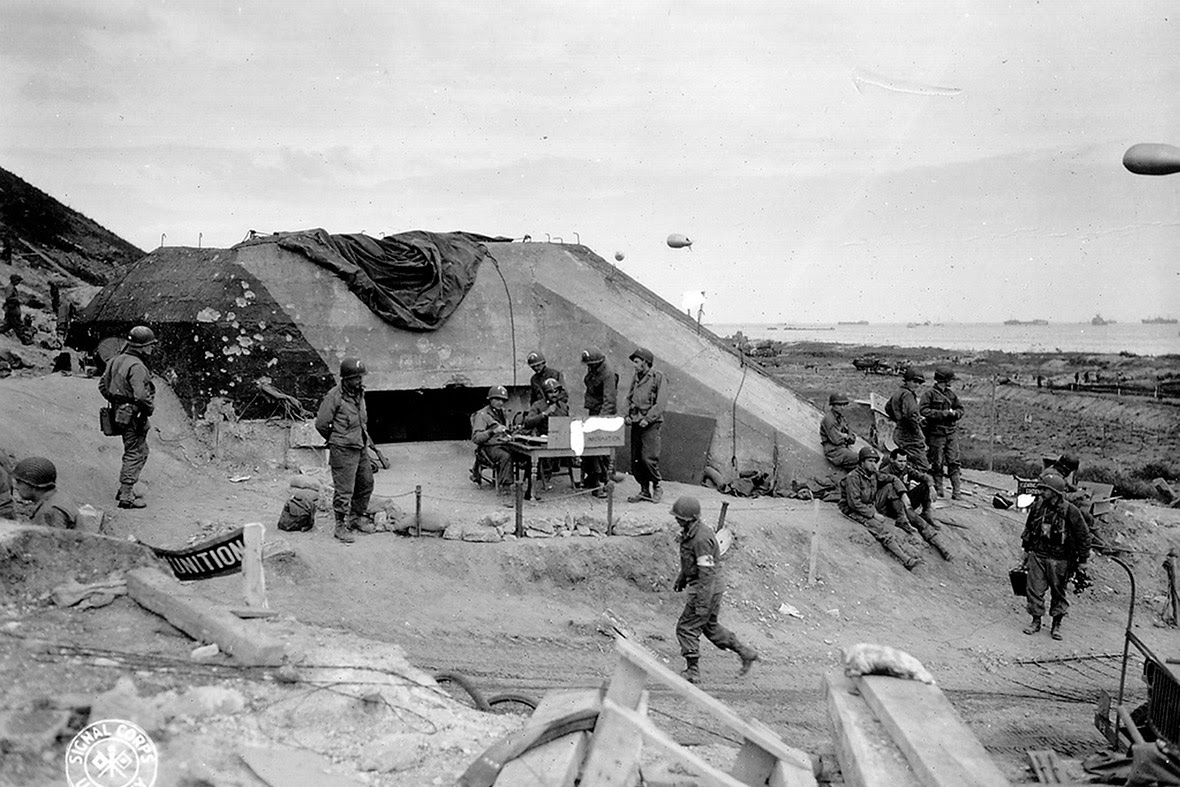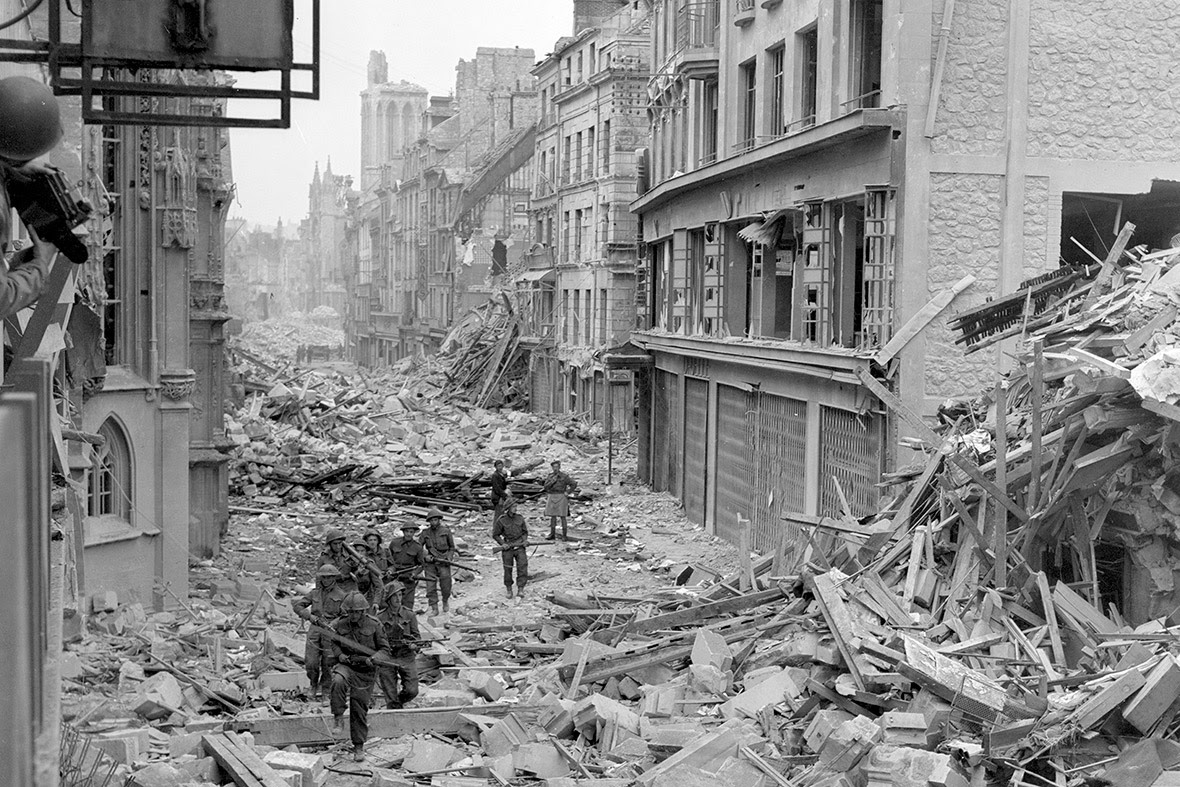D-Day Landing Sites Then and Now: Normandy Beaches in 1944 and 70 Years Later
Today, as many around the world prepare to commemorate the 70th anniversary of the landings, pictures of tourists soaking up the sun on Normandy's beaches stand in stark contrast to images taken around the time of the invasion.
Reuters photographer Chris Helgren compiled archive pictures taken during the invasion and went back to the same places to photograph them as they appear today.

June 5, 1944: The 2nd Battalion US Army Rangers march to their landing craft in Weymouth, England. They were tasked with capturing the German heavy coastal defence battery at Pointe du Hoc to the west of the D-Day landing zone of Omaha Beach

Tourists walk along the beach-front in the Dorset holiday town of Weymouth. The port was the departure point for thousands of Allied troops who took part in the D-Day landings

June 6, 1944: US reinforcements land on Omaha beach during the Normandy D-Day landings near Vierville sur Mer, France

Holidaymakers enjoy the sunshine on the former D-Day landing zone of Omaha beach near Vierville sur Mer, France

June 6, 1944: Members of an American landing party assist troops whose landing craft was sunk by enemy fire off Omaha beach, near Colleville sur Mer, France

A tourist carries a bucket and spade to her child on the former D-Day landing zone of Omaha beach, near Colleville sur Mer, France

June 6, 1944: US Army soldiers of the 8th Infantry Regiment, 4th Infantry Division, move out over the seawall on Utah Beach after coming ashore in front of a concrete wall near La Madeleine, France

Children walk over the remains of a concrete wall on the former Utah Beach D-Day landing zone near La Madeleine, France

June 6, 1944: A Cromwell tank leads a British Army column from the 4th County of London Yeomanry, 7th Armoured Division, after landing on Gold Beach on D-Day in Ver-sur-Mer, France

A couple walk inland from the former D-Day landing zone of Gold Beach where British forces came ashore in 1944, in Ver-sur-Mer, France

June 194: A crashed US fighter plane is seen on the waterfront some time after Canadian forces came ashore on a Juno Beach D-Day landing zone in Saint-Aubin-sur-Mer, France

Tourists enjoy the sunshine on the former Juno Beach D-Day landing zone, where Canadian forces came ashore, in Saint-Aubin-sur-Mer, France

June 6, 1944: US Army troops make a battle plan in a farmyard amid cattle, killed by artillery bursts, near the D-Day landing zone of Utah Beach in Les Dunes de Varreville, France

Farmer Raymond Bertot, who was 19 when allied troops came ashore in 1944, poses on his property near the former D-Day landing zone of Utah Beach in Les Dunes de Varreville, France

June 7, 1944: US Army troops congregate around a signal post used by engineers on the site of a captured German bunker overlooking Omaha Beach after the D-Day landings near Saint Laurent sur Mer

Tourists walk past a former German bunker overlooking the D-Day landing zone on Omaha Beach near Saint Laurent sur Mer, France

June 18, 1944: US Army reinforcements march up a hill past a German bunker overlooking Omaha Beach after the D-Day landings near Colleville sur Mer, France

Youths hike up a hill past an old German bunker overlooking the former D-Day landing zone of Omaha Beach near Colleville sur Mer, France

June 8, 1944: A US flag lies as a marker on a destroyed bunker two days after the strategic site overlooking D-Day beaches was captured by US Army Rangers at Pointe du Hoc, France

An Italian tourist views a bunker at a strategic site overlooking the D-Day beaches which had been captured by US Army Rangers at Pointe du Hoc, France

July 1944: Canadian troops patrol along the destroyed Rue Saint-Pierre after German forces were dislodged from Caen

Shoppers walk along the rebuilt Rue Saint-Pierre in Caen, which was destroyed following the D-Day landings

June 15, 1944: The body of a dead German soldier lies in the main square of Place Du Marche in Trevieres after the town was taken by US troops who landed at nearby Omaha Beach

Tourists walk across the main square of Place Du Marche in Trevieres, near the former D-Day landing zone of Omaha Beach

June 6, 1944: US Army paratroopers of the 101st Airborne Division drive a captured German Kubelwagen at the junction of Rue Holgate and RN13 in Carentan, France

Girls run across the street at the junction of Rue Holgate and RN13 in the Normandy town of Carentan, France

June 6, 1944: German prisoners-of-war march along Juno Beach landing area to a ship taking them to England, after they were captured by Canadian troops at Bernieres Sur Mer, France

A tourist sunbathes on a former Juno Beach landing area where Canadian troops came ashore on D-Day at Bernieres Sur Mer, France

August 21, 1944: German prisoners of war captured after the D-Day landings in Normandy are guarded by US troops at a camp in Nonant-le-Pin, France

A farm field remains where German prisoners of war were interned following the D-Day landings in Nonant-le-Pin, Normandy

Left : Taxis to Hell – and Back – Into the Jaws of Death is a historic photograph taken on June 6, 1944, by Robert F. Sargent, a chief photographer's mate in the United States Coast Guard. It depicts U.S. Army's 1st Infantry Division soldiers disembarking from a LCVP (Landing Craft, Vehicle, Personnel) from the U.S. Coast Guard-manned USS Samuel Chase at Omaha Beach during the Normandy Landings in World War II. U.S. troops wade ashore from a Coast Guard landing craft at Omaha Beach during the Normandy D-Day landings near Vierville sur Mer on June 6, 1944.
Right: Tourists take part in a land sailing class on the former D-Day landing zone of Omaha beach near Vierville sur Mer on Aug. 22, 2013.
Comments
Post a Comment